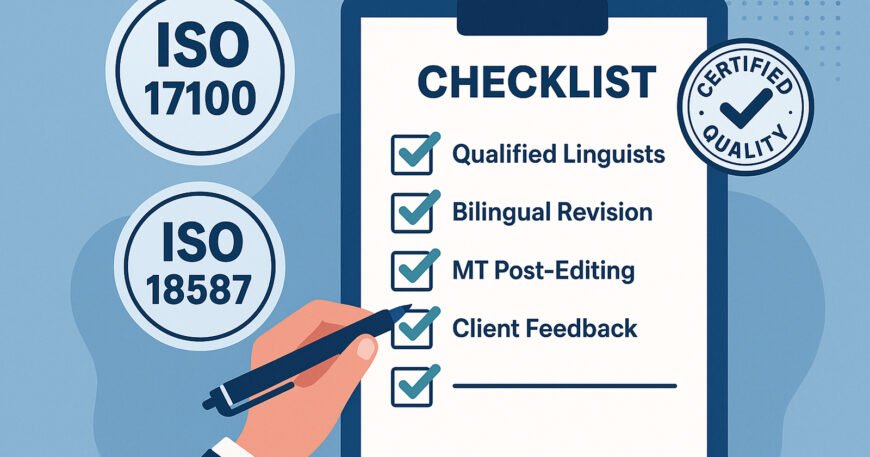Compliance with ISO 17100 and ISO 18587 is a mark of quality and professionalism in the translation industry. These standards set clear requirements—and evidence is key to demonstrating conformity.
For ISO 17100, evidence includes:
- Qualified linguist records (education, experience)
- Documented translation workflows and processes
- Client project briefs and agreements
- Bilingual revision logs by a second linguist
- Terminology management systems and style guides
For ISO 18587 (machine translation post-editing), evidence includes:
- Post-editor qualifications
- Pre- and post-editing process documentation
- Quality checks for fluency, accuracy, and completeness
- Assessment reports showing human input improved MT output
Both standards require traceability, continuous improvement records, and client feedback documentation.
Maintaining this evidence ensures audit readiness and builds client trust. It shows that your translation service is not only efficient—but also meets globally recognized quality benchmarks.



